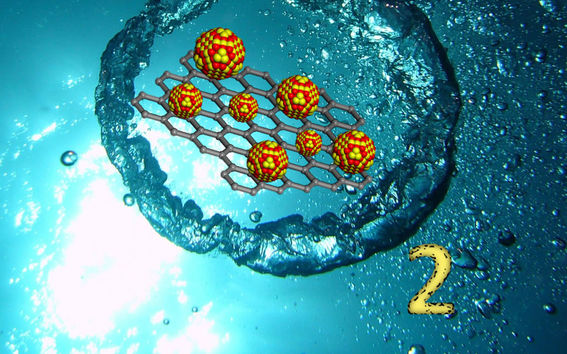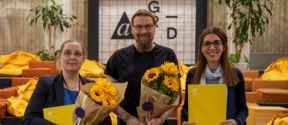A novel approach to construct a highly active and durable nanocatalyst offers solutions to energy storage problems

With a simple method, scientists have constructed an exceptionally active and highly durable nanocatalyst for the water oxidation reaction.
Natural resources have to be utilised responsibly to meet the needs of the growing population as well as to minimise the impact on our environment. Solar energy is abundant and clean, but intermittent, and thus a number of energy storage solutions are actively being investigated.
One of the most promising solutions is to store the electrical energy generated by solar cells into chemical energy by using water splitting. It is a chemical reaction in which water is broken down into oxygen and hydrogen. Scientists have been trying to develop new catalysts to facilitate the water oxidation reaction, also known as the oxygen evolution reaction (OER).
Metal-organic frameworks (MOFs) have previously been used as precursors to generate active electrocatalysts through high temperature pyrolysis. However, the pyrolysis occurs only at relatively high temperature up to 600°C under inert atmosphere, and it is highly dependent on thermal stability of MOF. Such process suffers from limited implementation in energy applications, especially whenever thermally non-stable support is used.
Now scientists from Aalto University and Zewail City of Science and Technology (Egypt) have succeeded in designing a process that for the first time occurs at room temperature under ambient conditions, resulting in exceptionally active and highly durable nanocatalyst for the oxygen evolution reaction.
“The process starts with a controlled release of the precursor active ion through degradation of MOF in alkaline medium. The degradation is followed by an instantaneous precipitation of the precursor ion in the form of isolated nanocluster/islands. The last step is the electrochemical attachment of the active nanocatalyst to the electrode surface”, explains Professor Mady Elbahri from Aalto University.
“The electrochemical attachment of the nanocatalyst on the electrode surface is achieved through particle deposition within the electrode vicinity under the influence of the applied electric field through which an adhered catalyst layer is formed”, describes PhD student A. Soliman from Aalto University.
The method can prove useful in accessing numerous electrochemical processes including catalysis and sensing and in providing viable solutions to a number of demanding applications.
“Such a green, simple and easy accessible way, coupled to the rich chemistry and versatility of the MOF precursor, opens up more possibilities for MOF-based nanocatalysts”, says Professor M. AlKordi from Zewail City of Science and Technology.
In addition to energy storage, other possible applications could be found in carbon nanotubes and 2D materials like metal sulfides and chalcogenides, and subsequent electrochemical surface reconstruction.
The study has been published in Chemical Communications
More information:
Mady Elbahri, Professor
Aalto University
[email protected]
050 464 8990
- Published:
- Updated:
Read more news

Aalto Open Science Award ceremony brought together Aaltonians to discuss open science
Last week we gathered at A Grid to celebrate the awardees of the Aalto Open Science Award 2023 and discuss open science matters with the Aalto community.
Seed funding available to boost collaboration between Aalto, KU Leuven and University of Helsinki
Aalto University, KU Leuven and the University of Helsinki launch the 2nd exploratory seed funding call to explore research collaboration possibilities. The funding call is open until 10 September 2024.
Kierrätyskeskus Boksi donation point now in A Bloc
Boksi is located on the 1st floor of shopping center A Bloc, opposite R-kioski, and is available during the center’s opening hours.